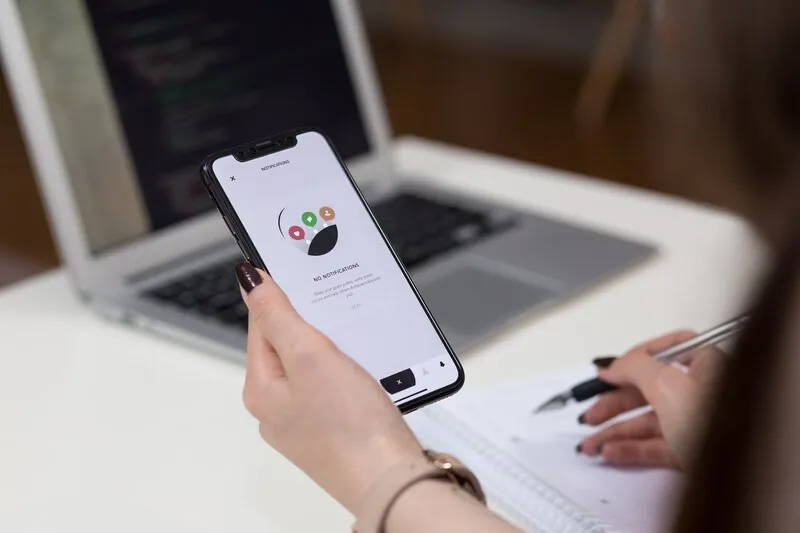

Mobile App Development
Mobile App Development Guide 2021
7min Read
In this Mobile App Development Guide 2021, we want to get you a bit inspired to take on your mobile app development project, but we also want to help you avoid some common pitfalls. The sad truth is that a lot of mobile apps aren’t successful. Don’t be a statistic. Read our Mobile App Development Guide 2021 and set yourself up for long term success with your mobile app.
3 Steps To Create Your Mobile App Minimum Viable Product (MVP)
Whether your mobile app succeeds or not often hinges on the initial strategy for your app. If you don’t have a solid strategy in place you can end up wasting a lot of time and money building a mobile app that is confusing to use, has too many features, or doesn’t have a clear value proposition.
In order to create an MVP that has true market potential, you need to follow this 3 step process:
Design and Develop Your Mobile App
- Define your app strategy
- Create wireframes of your app experience and do user testing
- Design your mobile app
- Document your app requirements
- Develop and test your mobile app
Launch and Market Your Mobile App
- Finalize your app analytics, app store listing, and website
- Launch and market your app
Iterate on Your Mobile App
- Measure your app performance
- Get user feedback
- Iterate and enhance your app
Top 3 Advantages of a Mobile App Versus a Web App
Here at Sneakers Apps we’re often asked, why do I need a mobile app when I can just build a web app? Sometimes our short answer is, “You’re 100% right. Your business would actually be better off with a web app.” Not every business needs a mobile app. We evaluate this on a case-by-case basis and look at your business goals, what problems you hope to solve with your app, and who your end users will be.
That said, the 3 advantages of of a mobile app versus a web app are:
App Store Discoverability
A lot of people search for things they need on the app store on their phone. They also search google as well. In both cases, users will be quickly brought to your app and can quickly see an overview about it and make the decision to use it. As opposed to reading through an entire website. You can also advertise on the app stores.
Ease of Access
While it’s possible for someone to go to the mobile browser on their phone and bring up a website, it’s not as pleasant of an experience as quickly tapping a button on their home screen that has a nicely designed, easy to recognize app icon. In addition, an app doesn’t have to reload everything each time it’s accessed since it can easily store things on a user’s phone and so it’s typically much quicker for an app to load than a web app. People hate waiting for things to load.
Hardware Integrations
Last but not least, mobile apps have an easier time making use of a phone’s hardware capabilities. It’s easy for an app to get precise location information, use the phone’s camera or photo library, or even connect to a peripheral via bluetooth. You can typically do these things from a web app as well, but it’s generally not as pleasant and consistent of a user experience. Last but not least, mobile push notifications are a game changer when it comes to getting users to re-engage with your app.
4 Best Mobile App Development Tools for a Thriving App
Aside from putting together a solid app strategy and then designing and developing your app, there are a number of supporting tools that you should consider integrating into your app so that you can deliver a reliable app experience for your users.
Here are our the X Best Mobile App Development Tools for a Thriving App:
Crash/Bug Reporting
An app isn’t like a website. Once your app is in the app store, you have to go through a process to update it and that process can take a couple of days. That’s why it’s important to integrate a tool like Instabug into your app so that you can uncover, analyze and fix any app performance, quality or stability issues. Having a stable app keeps your users happy and can also lead to better app reviews or avoiding really bad app reviews.
Analytics
Google Analytics is the go to standard for seeing how users are engaging with a website. But as we said before, an app isn’t like a website. In order to properly measure mobile app user engagement, you need an analytics tool that is geared towards mobile apps and has an easy to use software development kit. Two of our top recommendations are Amplitude and Firebase.
Customer Engagement
Once you’ve got users, how to you keep them engaged and coming back to your platform? This can actually get quite complex and so there are a number of great platforms that we recommend:
Build Tools
We’re big on engineering best practices here at sneakers. While it might be a bit more on the boring/geeky side of things, we think it’s a worthwhile investment to speak to your engineering team and ensure that they have a process in place for making builds repeatedly and consistently with using a build tool like Fastlane.
Top Cross Platform Mobile App Development Frameworks for 2021-2022
In this day and age it’s pretty much impossible to talk about mobile app development and not talk about cross platform development strategies. While cross platform mobile development definitely has some downsides, it can be a great way to get an app built and try to conserve some budget. The two biggest players in this space are React Native and Flutter. React Native had an earlier start and is web based so it has a larger following, but Flutter continues to gain traction and feels more like traditional mobile development.
Want to learn more about cross-platform mobile app development? Read our Ultimate Guide to Cross-Platform App Development (2022).
What is the Average Mobile App Development Timeline?
Like anything worth doing well, creating a mobile application that you’ll be proud of and that resonates with users takes time. Typically a mobile application will take 6 months to design, test, and build. A very simple app could be done in a shorter amount of time and a very complex app can take 6-12 months, but 6 months is a safe, conservative amount of time as a baseline.
Let’s break that estimate own a bit more:
- Strategy: 2-4 weeks
- UI/UX, Branding, Design: 1-3 months
- Development: 4+ months.
Mobile App Development Team Structure for the Greatest Success
With the right team in place, your mobile app can go a long way. You can layer in a lot more people, but here’s a quick overview of the essential team members:
- Product Manager
- Project Manager
- Lead Designer (a separate Creative Director is a plus)
- Engineers (Lead Engineer + Supporting Engineers)
- Testers
How Much Does it Cost for Mobile App Development? Let’s Break It Down
There are a lot of factors that go into how much it will cost for mobile app development. If you use a 100% offshore company in India, you may pay very little, but the end result will more than likely be subpar. If you use a 100% US based company, then the price tag will get very expensive, but you will more than likely end up with a much better result.
A safe typical number would be in the range of $200-500k and here’s what that looks like in terms of cost breakdown:
- Strategy, Branding, UI/UX: $10-50k
- Design: Typically $20-70k
- Development: Typically $150-500k
Mobile App Development Outsourcing: 3 Reasons You Should Outsource
Whether or not to outsource your mobile app development is never an easy decision to make. It can oftentimes feel scary and feel more expensive than doing it yourself if you have some in-house digital expertise. But just like when you build a house you’d want to hire a good general contractor, it’s better to have a trusted partner when you want to take on mobile app development.
Here are the top 3 reasons you should outsource your mobile app development:
Need to Get to Market Quickly
If you’re feeling a bit of a time crunch or already seeing a lot of competition in your space, then outsourcing your mobile app development is the way to go. When you work with an outsourcing team that has a solid process for designing and developing a mobile app you’ll be much more efficient with your time. It will also allow you to focus on other areas of your business.
Need to Save Money in the Long Run
As the saying goes: “Do it right the first time.” When you try to design and develop a mobile app yourself with a couple of freelancers you can end up with a product that works, but that doesn’t have good user experience and so you’ll ultimately be forced to redo the majority of your app and spend even more money. Not to mention the cost of all the time and investor confidence you’ve lost.
Need to Reduce Risk
In the mobile app game, strategic mistakes are time consuming and costly and, ultimately, detrimental to your business. If you want to ensure that you have had someone help you really think through your app’s strategy and user experience and use good development practices then outsourcing is the way to go.
Three Mobile App Development Tips for Small Businesses
If you’re a small business and are considering creating a mobile app, here are three tips to help you avoid getting in over your head:
Buy Before Build
One of the best ways to create a mobile app for your business is to not build one yourself at all. Instead, do some google searches to see if there are apps and platforms for your industry that you can license. This will mean that your app might not have every single bell and whistle that you’d like, but it will save you a ton of time, money, and headaches trying to create and manage an app yourself.
Consider a Low Code Solution
If you’ve shopped around but can’t find a solution to licence for your business, you might want to consider using a low code solution to build your first app. This will help save you a lot of time and not get you too overwhelmed with a lot of investment in technology infrastructure. Tools like Firebase and Bubble are some interesting options to consider.
Figure Out Your Strategy Before Jumping In
So you’ve looked at buy before build options, low code options, and have come up short. What next? We recommend investing a small number of funds to map out a clear strategy for your app so that you can improve your chances for long-term success and understand what it will realistically cost to design it, build it, and launch it.
We also put together a list of Mobile App Development Mistakes to avoid and Top Factors That Make a Mobile App a Good One. Be sure to check them out.
Need help with a project? Contact us.




